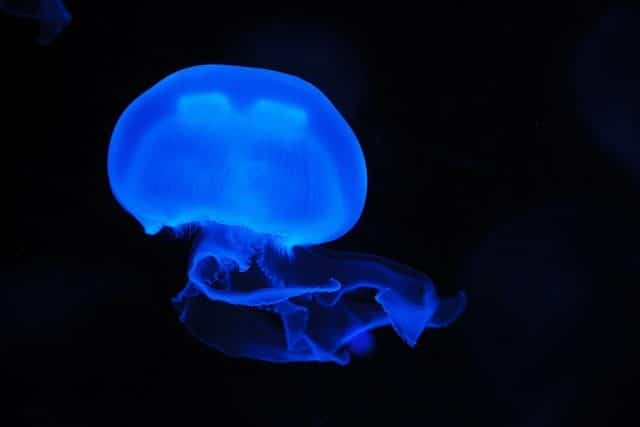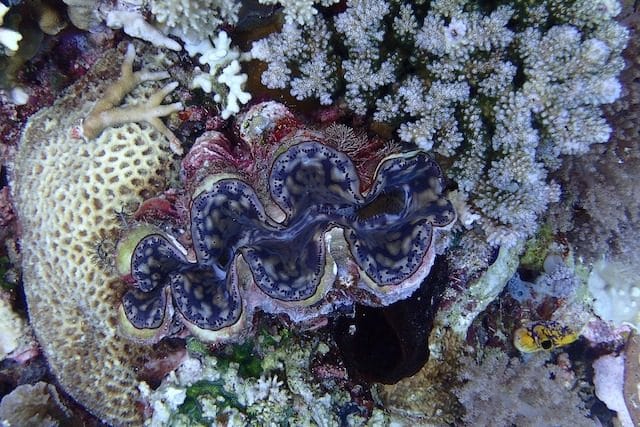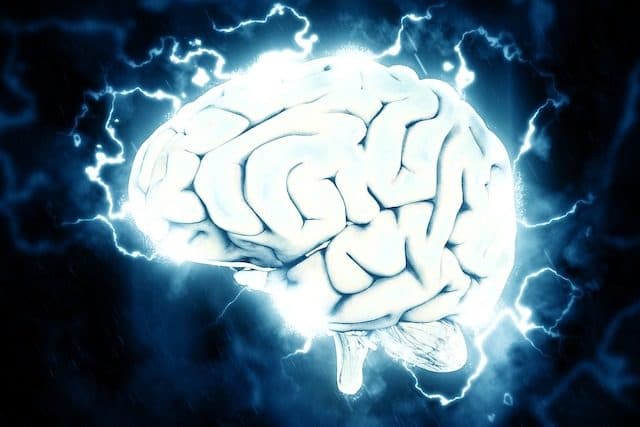Have you ever considered a sea sponge? They are some of the oldest and longest-lived creatures in the world. The oldest one we know of was at least 4,500 years old, and they have been around for at least 750 million years. Clearly, they’re doing something right, but whatever it is, they do it without a brain.
Sea sponges are some of the simplest organisms in the world. They don’t have any organs at all, not even neurons. But if you follow the evolutionary record far enough, back before our ancestors had brains, it took only 18 kinds of cells to come together to form the sea sponge. There were enough genes in there to make a brain, but the sea sponge didn’t need one.
As simple as a sea sponge is, they are rooted in place and feed on microorganisms that get caught up in them; they is also remarkable. Before the sea sponge, most of the life on Earth was single-celled organisms. For billions of years, in fact, this was the standard. And then life got motivated to do something interesting.
Several cells came together and the sea sponge was formed, shortly after comb jellies. Near as we can tell, sea sponges were probably the second multicellular organism ever. But the comb jelly was an evolutionary endpoint, nothing came from them. From the sponge came everything, even us.
Nervous systems and brains evolved in us after. Maybe an earlier relative had these or maybe the sponge just set the groundwork. But they proved, and still proved, life can flourish without a brain, without a nervous system, without very much at all. But how?
What Organisms Have No Brain?

It may not be surprising to learn that most of the creatures that don’t have a brain in this world live in the sea. As we saw with sponges and comb jellies, multicellular life developed in the sea, and a lot of it has stayed there and never evolved the need for a brain. Most of these creatures are fairly slow-moving or even permanently rooted in place.
Aside from the two we already met, things like starfish, jellyfish, sea cucumbers, coral, and clams don’t have brains, either. All of them function very well and can eat, reproduce, and live their lives without any need for a brain. Additionally, sea anemones, nematodes, and oysters are brainless, as are tapeworms and various other parasites. And, though it does seem rather obvious, plants and fungi are devoid of brains as well.
How Can an Organism Survive With No Brain?

So, you’re an organism with no brain. How are you supposed to survive the big, wide world? How does something with no brain know how to find food? How does it avoid Predators, extreme environments, horrible accidents, and every other thing that your brain helps you navigate on a day-to-day basis? For some creatures, it’s a lot easier than you might think.
All the creatures we have described are fairly simple organisms. They don’t need to do a lot to get by during the day. They eat, they reproduce, some of them do nothing more than that in their lifetimes. When you consider the organisms that don’t have brains, consider how they live their lives. A brain takes a lot of energy to operate. Most of these organisms simply couldn’t handle having a brain unless they greatly altered how they survive.
For the most part, these organisms have a spread-out system that operates like a nervous system but isn’t quite the same as one. Starfish, for instance, have a decentralized nervous system. There is a nerve ring, and nerve signals are sent from each individual arm along a radial nerve, but they operate independently.
The sea star moves by one of the tiny little feet that exist on the bottom of the arm, reaching forward, and that motion is detected by the others, and they all independently decide to move along with it. So there is no single brain deciding what to do; it is just nerve signals that work in conjunction to allow the entire organism to move, to eat, to do whatever it needs to do.
Basically, an organism doesn’t need a brain to survive if it’s not that complex to begin with. As long as it has some kind of nerve structure in its body that sends signals to allow whatever parts it has to do their job, that’s all you need. It won’t be a rich life full of art, laughter, and music, but it can get you from point A to point B and keep you fed.
What Can a Brainless Creature Do?

Jellyfish have a group of nerves called a nerve net or ring that is spread throughout their body, not centralized like a brain, but it still operates very much like what you might expect of a brain in some ways. It can sense changes in the environment like temperature, salinity, vibrations, and current. These nerves are what allow a jellyfish to know where it needs to go to avoid harm and pursue beneficial things.
Clusters of nerve endings called rhopalia allow the jelly to sense light and maintain its upright status so it doesn’t end up swimming straight down all the time.
Even without a brain, jellyfish can learn and adapt. Habituation and sensitization, when you get used to something or you can’t ignore something, are how many creatures, like jellyfish, were thought to learn for a long time. But associative learning, like when your cat comes running because it heard the can opener and associates the sound with dinner, was thought to be impossible for these simple creatures.
However, studies on jellyfish have shown that associative learning is possible even without a brain. Tanks were painted to look like distant mangroves, contrasting light and dark roots that the sensitive eyes of the Caribbean box jellyfish would be able to detect.
Initially, the jellyfish swam towards these contrasting colors, which they thought were roots, and hit the side of the tank. But they quickly learned to stay away from the painted roots, having associated going towards them with the discomfort of bumping into the side of the tank. Not a big deal for you or me, or even your cat, but for something with no brain at all? That’s impressive.
Sea anemones showed similar associative learning when presented with light and a shock stimulus. In time, some of them were able to learn that the light represented the potential for a shock and would retract just due to light without the shock, meaning they had learned, even without a brain, to avoid one thing since it was associated with another.
Other anemones that are normally hostile to intruders can learn, after repeated interactions, when a nearby anemone is a genetic clone. It can recognize its own and not be hostile after learning that they are the same.
Some jellyfish have also shown off behavior that you might not think is unusual at first – sleeping. You take it for granted that most things have to sleep at some point, but if a jellyfish doesn’t have a brain, what is it going to sleep for? Sleep doesn’t necessarily happen to rest the body, and while we don’t fully understand the need for sleep as it relates to the brain, we know the brain needs sleep to sort of reorganize, recharge, and clean house. So why does the Cassiopeia jellyfish do it?
Researchers think it’s for basically the same reason that you and I sleep, but not as complex. It has led them to believe that there may have been a primitive form of sleep that existed before nervous systems were even a thing biologically, hundreds of millions of years ago.
Slime molds, another fascinating and weird creature that can exist as a single-celled organism or cluster together to form larger organisms, are also devoid of brains. To see them, you would probably never doubt this because, as the name suggests, they look like slime. However, this slime has proven it can solve mazes.
When placed at one end of a maze with food at the other, a slime mold will expand and fill in every path, taking every dead end. As it closes in on the food, it can retract the dead-end slimes back to the main body, leaving a trail to act as a signal to the rest of the slime to not go that way. Instead, all the slime will follow the shortest path to the food once it has learned that all the other ways are dead ends.
Even more amazing is that if one slime mold has learned to avoid something, it can be joined with another slime mold, and the new mold will learn from the old one to stay away from the negative stimuli.
Slime molds have also managed to solve the two-armed bandit problem, something that had previously been deemed only possible by organisms with brains. In simple terms, the two-armed bandit problem is a decision-making problem based on slot machines or one-armed bandits. You have two slot machines in front of you, and you need to decide which one you should play for the most rewards.
The choice is based on exploration versus exploitation. If you can only pull one arm at a time, you need to figure out which option is best between trying one and then the other or sticking with just one in the hopes of maximum payoff. You don’t know which one is the right choice, so you have to make a decision based on your experiences.
It’s not vastly complicated decision-making, but for a brainless slime mold to demonstrate the ability to master it is remarkable. In the experiment, the slime mold was given two paths to follow. One path led to a high-value food item, and the other path led to a low-value food item. Over time, the slime learned to adjust the path it followed to only go to the high-value item. In other words, it explored both options but exploited the more lucrative one.
Can a Human Survive With No Brain?

We know that many creatures have far more primitive brains than humans. And we now know that some organisms have no brain at all. So, how much of a brain does a human need to survive? Can a human live without a brain?
A man went to see a neurologist at the University of Marseille and had a brain scan done. The neurologist was shocked to discover that the man had almost no brain at all inside his skull. The cavity was filled almost completely with cerebrospinal fluid, and there was the barest amount of tissue there. This was a 44-year-old man who had a job as a civil servant. The test concluded that he had a below-average IQ, but he was perfectly able to function on his own. He was living a perfectly normal and, by all accounts, happy life.
The man had been born with a condition called hydrocephalus. The fluid that normally surrounds your brain had begun to press the brain tissue aside until it took up too much space. This is normally treated with a shunt that allows the liquid to drain off so the brain can expand back into space again.
Some people with this condition suffer great neurological and cognitive impairments. But some, even with as little as 5% brain tissue, can live perfectly normal lives. In one case, a young man with a layer of brain tissue just a millimeter thick inside his fluid-filled skull had a recorded IQ of 126 and had earned an honors degree in mathematics.
Around the world, people have gone to the hospital complaining of one problem or another, only to have scans of their brains show that they were missing their entire cerebellum. A woman named Michelle Mack was born with only the right side of her brain, which seemed to take over and rewire itself, according to doctors, to make up for the missing left portion. She has lived a full life, graduated from high school, and has a job and data entry.
While it is certainly unusual and not ideal, in some cases, humans can adapt to functioning with reduced and even very little brain tissue. As long as the brain stem is intact, controlling most of your autonomic functions, it seems that some people can continue to thrive even in the most extreme circumstances.

Bir yanıt yazın